« Sunday Inspiration from The High Calling | Home | Crown Him With Many Crowns: A New Verse »
The Surprising Origins of a Great Hymn
By Mark D. Roberts | Monday, March 29, 2010
One of my favorite hymns, and one that is frequently sung during Holy Week and Eastertide, is “Crown Him with Many Crowns.” The lyrics of this glorious hymn celebrate the multi-faceted sovereignty of Christ.
If you were to look in several different hymnals, you’d find some variation in the lyrics of “Crown Him with Many Crowns.” Some hymnals have four stanzas; others have more. This lyrical diversity stems from the fact that the author of this hymn, Matthew Bridges, wrote six original stanzas in 1851. But then, in 1874, Godfrey Thring wrote another version of the hymn, with six new stanzas. Thring, it seems, was concerned that some of Bridges’ lyrics were too Catholic. In time, the versions were mingled, with different hymnals producing different hybrid versions.
I’ll reproduce the stanzas with which I am most familiar, adding some notes of explanation:
Crown him with many crowns,
The Lamb upon his throne;
Hark! how the heav’nly anthem drowns
All music but its own:
Awake, my soul, and sing
Of him who died for thee,
And hail him as thy matchless King
Thro’ all eternity.
Note: This is Bridges’ original stanza 1. It is based on Revelation 19:11-12: “Then I saw heaven opened, and a white horse was standing there. Its rider was named Faithful and True, for he judges fairly and wages a righteous war. His eyes were like flames of fire, and on his head were many crowns.”
Crown Him the Son of God
Before the worlds began,
And ye, who tread where He hath trod,
Crown Him the Son of man;
Who every grief hath known
That wrings the human breast,
And takes and bears them for His own,
That all in Him may rest.
Note: This is Thring’s original stanza 2. The ideas are quite fine and moving. But this verse does not pick up the “Crown him the Lord of . . .” structure that is common to the other stanzas. This may be why it is less commonly sung, in my experience.
Crown him the Lord of peace,
Whose pow’r a scepter sways
From pole to pole, that wars may cease,
And all be pray’r and praise:
His reign shall know no end,
And round his pierced feet
Fair flow’rs of paradise extend
Their fragrance ever sweet.
Note: This is Bridges’ original stanza 3.
Crown Him the Lord of love!
Behold His hands and side,–
Rich wounds, yet visible above,
In beauty glorified:
No angel in the sky
Can fully bear that sight,
But downward bends his burning eye
At mysteries so bright!
Note: This is Bridges’ original stanza 4.
Crown Him the Lord of life
Who triumphed o’er the grave,
And rose victorious in the strife
For those He came to save;
His glories now we sing
Who died, and rose on high.
Who died, eternal life to bring
And lives that death may die.
Note: This is Thring’s original stanza 4.
Crown Him the Lord of years!
The Potentate of time,–
Creator of the rolling spheres,
Ineffably sublime!
All hail! Redeemer, Hail!
For Thou hast died for me;
Thy praise shall never, never fail
Throughout eternity!
Note: This is first half of Bridges’ original stanza 5 plus the second half of Bridges’ original stanza 6.
You may be surprised to learn of the checkered history and authorship of this hymn. Most Christians think of hymns as having been written one way, the best way, and the only way they should be sung. If you change the words of a hymn, you are in big trouble. It’s almost worse than heresy. (In some churches, changing the words of a hymn is worse than heresy.) But, in fact, many hymns we know have gone through lots of editing. And most hymns we sing were not originally sung to the tunes we associate with them.
I think “Crown Him with Many Crowns” is a wonderful hymn, no matter which stanzas you choose. But I also think it has a glaring omission. This omission is particularly obvious in holy week. Tomorrow I’ll tell you what I think is missing, and what I’d suggest to fill the gap. Then I’ll get back to my ruminations on Redeemer Presbyterian Church in New York City.
Topics: Hymns |
4 Responses to “The Surprising Origins of a Great Hymn”
Comments
Thanks for your willingness to make a comment. Note: I do not moderate comments before they are posted, though they are automatically screened for profanities, spam, etc., and sometimes the screening program holds comments for moderation even though they're not offensive. I encourage open dialogue and serious disagreement, and am always willing to learn from my mistakes. I will not delete comments unless they are extraordinarily rude or irrelevant to the topic at hand. You do need to login in order to make a comment, because this cuts down on spam. You are free to use a nickname if you wish. Finally, I will eventually read all comments, but I don't have the time to respond to them on a consistent basis because I've got a few other demands on my time, like my "day job," my family, sleep, etc.
You must be logged in to post a comment.






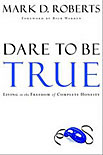

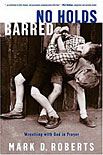
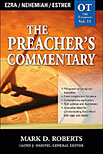
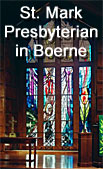

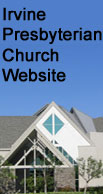
March 29th, 2010 at 3:17 am
You’re in trouble now!
Tom
March 29th, 2010 at 5:15 am
This is one of my favorite hymns. I don’t know why, but it reminds me of sitting in church with my grandmother at Dauphin Way Baptist Church in Mobile, AL while my parents sang in the choir. My grandfather was an usher, and he always sat in a chair in the back corner of the sanctuary near the rear door with a stack of bulletins, so he could hand one to anybody who came in late.
Thanks for the history - AND the memories this hymn evokes for me.
March 29th, 2010 at 7:59 am
This is really interesting. Thanks for sharing this Mark. Looking forward to hearing about the omission tomorrow.
March 29th, 2010 at 12:54 pm
Thanks for an uplifting post & song for all of the troops!! God Bless your readers, posters & Family a special hug for Kara & Nathan from california especially for the upcoming Holiday-Easter! j & Family